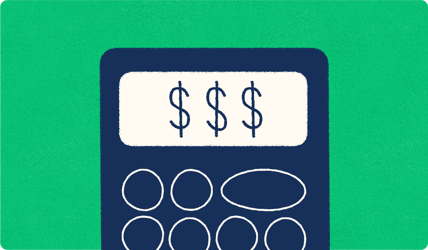
How To Measure And Improve Your SMS Delivery Rate
When you send an important text message, you expect it to reach your audience, but that doesn’t always happen. Messages can fail due to carrier filtering, invalid numbers, or registration issues, all of which impact your SMS delivery rate.
Delivery rate measures how many of your sent messages actually make it to recipients, and it’s one of the best indicators of communication reliability. Whether you’re sharing updates, coordinating alerts, or managing large-scale campaigns, a strong delivery rate ensures your message gets through when it matters most.
Text-Em-All’s mass texting service for businesses helps organizations send messages quickly and reliably at scale with built-in compliance safeguards, transparent delivery reporting, and a proven reputation for carrier trust.
What is SMS delivery rate?
SMS delivery rate is a key performance indicator (KPI) that measures the percentage of your text messages that get delivered. Since text messages have an average open rate of 98%, this directly reflects the number of contacts who receive and view your message.
High delivery rates mean you're reaching the right people with the right message. Low rates point to invalid numbers, carrier filtering, or delivery issues.
What is a good SMS delivery rate?
A good SMS delivery rate typically falls between 90% and 98%. Anything below 90% may point to issues like unregistered numbers, poor list hygiene, or carrier filtering. Rates on the higher end usually mean your numbers are registered, your lists are permission-based, and your content complies with carrier standards.
You can monitor delivery, response, and opt-out rates directly in Text-Em-All’s dashboard to spot trends and address potential issues early.
How SMS delivery rates are calculated
To calculate your SMS delivery rate, divide the number of successfully delivered messages by the total number of messages sent and multiply by 100 to get a percentage.
Number of delivered messages / Number of sent messages) x 100 = Delivery Rate
For example, if you sent out 1,000 SMS messages and 950 of them were delivered, your SMS delivery rate would be 95%.
SMS blocking vs. spam filtering
SMS blocking occurs when a carrier stops a message before it’s delivered, often because the sending number isn’t registered or the carrier detects noncompliance. Spam filtering, on the other hand, happens when a message is delivered but flagged as unwanted content and hidden from the recipient.
The fixes for both are the same: register your number, use permission-based lists, identify your organization clearly, and provide easy opt-outs.
3 common reasons for failed message delivery
-
Invalid or inactive numbers
Numbers that have been disconnected or recycled by carriers can’t receive messages. Regular list cleaning keeps your delivery rate healthy. -
Carrier or content filtering
Carriers may block messages that look suspicious or contain spammy phrases (like “FREE!!!” or “Act NOW”). Include clear identity and opt-out language in every text—for example, “Reply STOP to opt out.” -
Unregistered numbers
Messages sent from unverified or unregistered numbers may be throttled or blocked. Using a registered 10DLC or short code drastically improves reliability.
For a deeper dive into building stronger text communication strategies, check out our complete guide to business text messaging and customer communication. It covers how to plan, send, and measure effective messages that support your delivery goals.
4 reliable bulk SMS services
When evaluating SMS platforms, reliability comes down to infrastructure, compliance safeguards, and scalability. Here are four trusted providers for different needs:
Text-Em-All: best for emergency alerts and high-volume business texting
Text-Em-All is built for organizations that need both speed and trust. With support for mass texting and automated voice calls, it helps teams communicate critical updates, reminders, and marketing messages with confidence.
While Text-Em-All doesn’t offer geo-targeting (useful for highly localized emergency scenarios), most businesses achieve precise outreach using audience segmentation by location and delivery confirmation reports. The platform also supports multi-channel redundancy—text plus voice—to ensure messages get through even when networks are congested.
Learn more about how Text-Em-All handles urgent communications in our post on emergency text alert tools.
AlertMedia: best for multi-channel emergency communication
AlertMedia specializes in enterprise-grade crisis communication with robust geo-targeting, multi-channel notifications, and global reach. It’s designed for large organizations with complex location-based alerting needs.
Twilio: best for developers and custom integrations
Twilio offers APIs and programmable messaging for organizations that want to build SMS into their own systems. It’s highly customizable but requires more technical setup and monitoring.
ClickSend: best for small organizations and simple campaigns
ClickSend provides an easy-to-use interface for smaller teams. It’s ideal for basic marketing or transactional messages where advanced reporting isn’t critical.
Takeaway: All four services deliver messages at scale, but Text-Em-All offers the best balance of compliance, reliability, and ease of use—without enterprise-level complexity or coding.
6 tips to improve your SMS delivery rate
Getting your SMS messages into your customers' hands shouldn't feel like a guessing game. The good news? Improving your delivery rate is completely doable when you follow a few simple SMS best practices.
-
Use a registered mass texting platform
Register your 10DLC or short code to improve deliverability and compliance. -
Write clear, compliant copy
Avoid spammy phrasing, misleading offers, or excessive punctuation -
Keep your lists clean
Regularly remove invalid or inactive numbers. Only message people who have opted in. -
Include clear opt-out instructions
“Reply STOP to opt out” reduces complaints and helps maintain trust. -
Send during reasonable hours
Respect timing guidelines and avoid sudden message bursts that mimic spam behavior. -
Compliance and Regulations
Make sure your SMS messages follow the rules, like the Telephone Consumer Protection Act (TCPA) in the US.
Comparing SMS delivery rates to email
While email remains a strong communication tool, SMS outperforms it in open and response rates because text messages don’t rely on Wi-Fi or spam filters. When reliability matters, SMS is still the fastest and most direct way to reach an audience.
In addition, since text message inboxes aren’t flooded the same way email inboxes are, the read rate for text messages is much higher than email read rates. According to recent statistics, the average SMS read rate hovers around 98%, while email read rates struggle to reach even 20%. Since the read rate is so high for text messaging, you can assume that the majority of your contacts read your delivered text messages.
How Text-Em-All ensures reliable SMS delivery
Text-Em-All’s infrastructure is designed around deliverability, compliance, and transparency:
- Carrier-approved routing: Messages travel through verified channels with proper number registration.
- Built-in compliance safeguards: Automated STOP handling and pacing prevent violations.
- Transparent analytics: View delivery, response, and opt-out rates to monitor performance.
- Multi-channel options: Combine texting with voice broadcasting for added reach during critical updates.
If your organization depends on reliable communication, whether for employee alerts, marketing messages, or event reminders, Text-Em-All helps you send with confidence.
Create your account today, and see how we can help pave the way for higher engagement and conversations!
Frequently asked questions
-
What’s a good delivery rate?
Anything above 90% is considered strong. Rates below 90% may indicate list hygiene or compliance issues.
-
Why is my delivery rate lower than expected?
Carrier filtering, unregistered numbers, and outdated contacts are the most common causes.
-
How do I measure my SMS delivery rate?
Your messaging dashboard should display the total number of messages sent versus delivered. Text-Em-All tracks this automatically.
-
Is SMS more reliable than email?
Yes. SMS typically has higher open and engagement rates because messages don’t rely on Wi-Fi or spam folders.
-
Does Text-Em-All provide delivery analytics?
Yes. You can view delivery, response, and opt-out rates for every campaign directly in your account.












